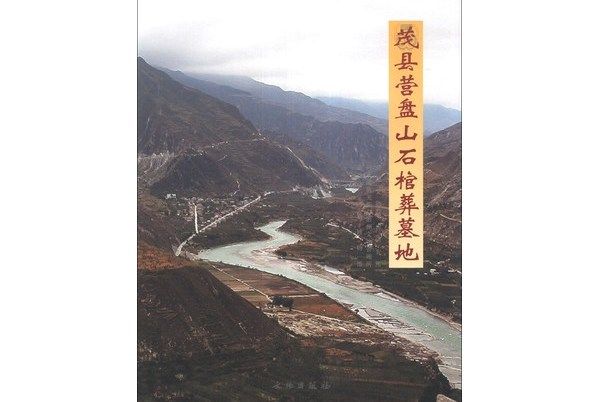《茂縣營盤山石棺葬墓地》是2013年7月文物出版社出版的圖書,作者是成都文物考古研究所、阿壩藏族羌族自治州文物管理所、茂縣羌族博物館。
內容簡介,圖書目錄,
內容簡介
From 2000 to 2006, Chengdu Municipal Institute of Cultural Relics and Archaeology and other organizations carried out five excavations at the Yingpanshan Site, covering an area of nearly 2500 square meters. Over 200 stone-coffin tombs and pits with artifacts were excavated.
In neat rows, the stone-coffin tombs were dug in the same layer and did not overlapped or disturbed each other. According to the orientation, all the tombs can be roughly divided into two groups. The first group was mainly distributed at the first and forth location, most of which has a direction angel of over150o. The second group was chiefly found at the second and third location, most of which has a direction angle less than 150o.
The structure of tombs is relatively uniform, consisting of the stone walls and cover but no bottom board. In some tombs, a stone slab was erected at the head end to form a head nest for placing funerary goods.
According to the number of head nest, the tombs are divided into three types. Tombs of Type I have no head nest and can be classified into three classes: Class A with a broad space but less in number, Class B with a small space and distribution in group, and Class C with relatively abundant funerary objects in separated goods pits. Tombs of Type II have one head nest, rich in number but with not many funerary objects. Built with processed stone slabs, Tombs of Typelll have double head nests, a broad tomb space and ample burial goods. The corpses of the tomb occupants were laid in three kinds of way, many of which were arranged in a supine position, with straight limbs and relatively intact skeletons. In the secondary burials, incomplete skeletons were dispersedly placed. Some bodies were put face-down and others might have been dismembered before the burial.
Compared with other cemeteries in the upper reaches of Min River, the Yingpanshan cemetery owns some special burial customs, such as leaving numerous potteries at the head or foot ends of the stone coffin, or digging an artifact pit near the tomb. Many small white stones or huge rocks found in the tomb chamber were deemed to be used for worship or some funerary purpose.
圖書目錄
第一章 緒言
第一節 概述
一 地理環境
二 歷史沿革
第二節 工作概況
一 岷江上游石棺葬發現與發掘歷史回顧
二 營盤山石棺葬墓地發掘經過
三 整理編寫
第二章 墓葬總述
一 地層介紹
二 墓葬概況
三 遺物概述
第三章 甲類墓
第一節 甲A類墓
一 2000M5
二 2000M31
三 2000M34
四 2000M35
五 2000M44
六 2002M3
七 2002M5
八 2002M8
九 2002M11
一○ 2002M14
一一 2002M15
一二 2002M29
一三 2002M40
一四 2003Ml
一五 2003M4
一六 2003M5
一七 2003M10
一八 2003M11
一九 2003Ml6
二○ 2003M19
二一 2003M28
二二 2004M3
二三 2004M4
二四 2004M6
二五 2004M10
二六 2004M11
二七 2004M15
二八 2004M31
二九 2006M13
第二節 甲B類墓
一 2002M47
二 2004M12
三 2004Ml7
四 2004Ml8
五 2004M25
六 2004M26
七 2006M9
八 2006M10
九 2006M1l
一○ 2006M12
一一 2006M16
第三節 甲C類墓
一 2000M1
二 2000M2
三 2003M22
四 2003H28
第四章 乙類墓
一 2000M3
……
第五章 丙類墓
第六章 其他墓
第七章 地層出土器物及採集品
第八章 分期與年代
第九章 相關問題的初步認識
附表 茂縣營盤山石棺葬登記表
附錄
後記
英文提要
Compared with other cemeteries in the upper reaches of Min River, the Yingpanshan cemetery owns some special burial customs, such as leaving numerous potteries at the head or foot ends of the stone coffin, or digging an artifact pit near the tomb. Many small white stones or huge rocks found in the tomb chamber were deemed to be used for worship or some funerary purpose.
圖書目錄
第一章 緒言
第一節 概述
一 地理環境
二 歷史沿革
第二節 工作概況
一 岷江上游石棺葬發現與發掘歷史回顧
二 營盤山石棺葬墓地發掘經過
三 整理編寫
第二章 墓葬總述
一 地層介紹
二 墓葬概況
三 遺物概述
第三章 甲類墓
第一節 甲A類墓
一 2000M5
二 2000M31
三 2000M34
四 2000M35
五 2000M44
六 2002M3
七 2002M5
八 2002M8
九 2002M11
一○ 2002M14
一一 2002M15
一二 2002M29
一三 2002M40
一四 2003Ml
一五 2003M4
一六 2003M5
一七 2003M10
一八 2003M11
一九 2003Ml6
二○ 2003M19
二一 2003M28
二二 2004M3
二三 2004M4
二四 2004M6
二五 2004M10
二六 2004M11
二七 2004M15
二八 2004M31
二九 2006M13
第二節 甲B類墓
一 2002M47
二 2004M12
三 2004Ml7
四 2004Ml8
五 2004M25
六 2004M26
七 2006M9
八 2006M10
九 2006M1l
一○ 2006M12
一一 2006M16
第三節 甲C類墓
一 2000M1
二 2000M2
三 2003M22
四 2003H28
第四章 乙類墓
一 2000M3
……
第五章 丙類墓
第六章 其他墓
第七章 地層出土器物及採集品
第八章 分期與年代
第九章 相關問題的初步認識
附表 茂縣營盤山石棺葬登記表
附錄
後記
英文提要

